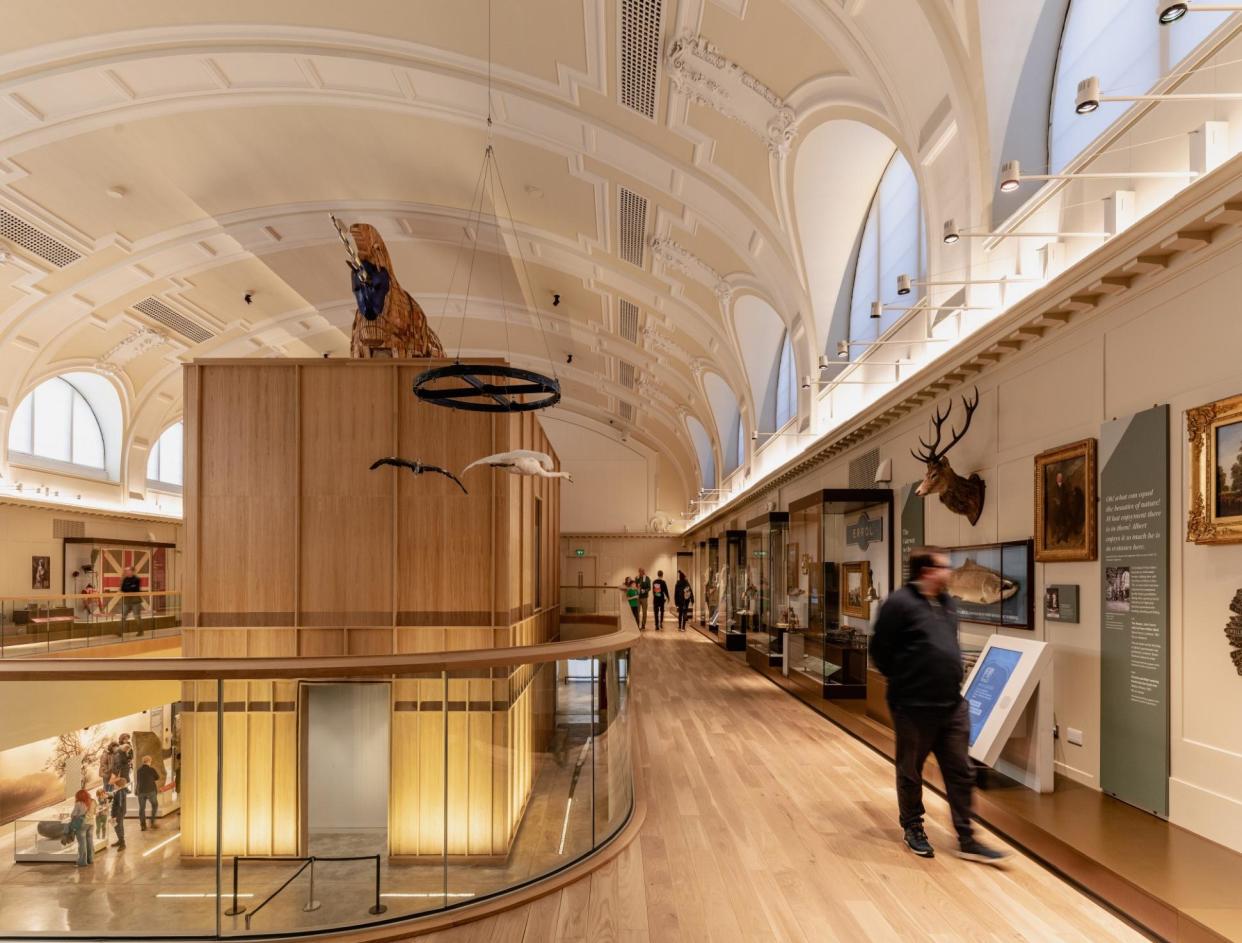Perth Museum review – a new-look leveller for the ancient seat of kings

It’s hard to think of a piece of masonry more charged with history, myth and emotion, per cubic inch, than the Stone of Destiny. This battered suitcase-sized object, on which Scottish and English kings have been inaugurated and crowned for centuries, has been abducted and re-abducted, bombed, broken and repaired. In 1996 it was taken to Edinburgh Castle from Westminster Abbey on the raised back of a Land Rover, surrounded by a glass screen and a guard of honour like a victorious president. Last year it was temporarily taken back to London, so that King Charles III could be crowned with it beneath him.
Now the stone sits in the former auditorium of Perth City Hall, a venue that formerly thrilled to the sounds of the Who, Morrissey and, just after she was first elected prime minister in 1979, Margaret Thatcher. It has been a long time coming home – it was last seen in this city (or, to be precise, at the nearby Scone Abbey) more than 700 years ago, before King Edward I of England seized it. Now it is the literal and metaphorical centrepiece of the newly opened £27m Perth Museum, which has been redeveloped and installed in the old hall with the help of the Dutch architectural practice Mecanoo and the exhibition designers Metaphor.
The presentation of the stone brings a challenge. As potent as it is, it is not endlessly fascinating to look at, even though its scars and the iron attachments used for carrying it do evoke some of its history. Its siting in an old performance space highlights the fact that it is a rock without much ’n’roll. It does, though, come with some support acts, the artefacts of the museum’s collection. These used to be part of the Perth Museum and Art Gallery, shown alongside paintings and sculptures. Now museum and gallery are separate institutions, with the latter staying in their former shared premises five minutes’ walk away.
The museum’s exhibits are an engaging mix, gathered by globe-trotting trader-adventurers and archaeologists digging in the local mud, that speaks of the life of a city that was influential beyond its size. There is a wondrous 3,000-year-old longboat, carved from the trunk of a tree that was 400 years old when it fell. There are Māori artefacts, including a rare parrot-feather cloak, whose display has been curated by staff from the Museum of New Zealand Te Papa Tongarewa. There are centuries-old children’s shoes, a piece of a meteorite, a very old dog skeleton, a more-than-lifesize model of liverwort, the skeleton of a moa. There are more recent items of city life: a penny farthing bicycle, suffrage banners, a sarcophagus created for the production of Hammer’s 1959 film The Mummy.
Mecanoo, whose previous work in Britain includes the shiny Library of Birmingham and the Home arts centre in Manchester, decided to keep it simple. They have kept intact most of the old city hall – a monumental stone building completed in 1914 – and repaired where possible its ornamental plasterwork. They have made its principal hall into the main exhibition space, with a gallery running round at the level where there were once balconies of seating. A second former auditorium is now a magnificently high-ceilinged cafe.
They have made the somewhat forbidding old building, a last gasp of Edwardian baroque, more permeable than it was. Tall windows lighting the cafe have been extended downwards to form a row of doors. A passage now runs from one side of the building to the other, inspired by narrow local streets known as vennels, running between the exhibition space and the cafe, announced on either side by new concave bronze portals, made by Black Isle Bronze in Nairn. These allow step-free access and a direct connection between city and museum – you can wander in from the square in which it stands, from either side, and quickly and easily find yourself in front of that ancient boat. Importantly, the museum is free to enter.
Mecanoo’s other big move is a two-storey pavilion on the central axis of the main hall, an oak-clad ark of the covenant with the Stone of Destiny inside. You reach the relic through an anteroom with an immersive video installation by 59 Productions (the “Stone Experience”) before automatic doors open to allow you into its presence. There you get a quiet minute or two with the stone, positioned at approximately sitting-height above the floor, before an animation about its history starts playing over the walls.
The film, fey and earnest like an old-fashioned educational cartoon, made my toes curl. The project as a whole also suffers from some expedient and evidently budget-led decisions: trees planned for the public space outside were omitted; some big waste bins are unfortunately housed next to one of the main entrances. To complete the project on time and on budget, as I am told has happened, should be applauded, but there’s a lack of overall coherence that comes from the ways that oak and bronze are combined with less considered and high-spec finishes.
But, these gripes apart, the stone’s situation amid all those other fragments of history, everyday and exotic, ancient and modern, enriches its meaning. It’s better that what is ultimately quite a humble artefact is part of the life of a city rather than cocooned in royal pomp. Mecanoo’s design gets all the main moves right, gives moments of delight, and achieves a balance between reverence and immediacy. The pavilion and the portals are handsome. It’s a good place for this famous object to end up.


